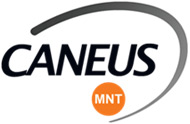|
Business Model |
| |
- Fractional Ownership
Model:
In this model, multinational participants
partner to deploy a constellation of relatively
inexpensive Nano-satellites and a network of
small, moveable ground terminals that together
create an efficient, persistent communications
infrastructure.
Partnership is provided in return for investment
in the system. Investment may be monetary, or
in-kind contributions such as develop and build
a spacecraft bus, integration & testing,
training, launch services, etc.. For example,
each country pays a fee for the participation to
the UN Global-Sat Consortium for managing this
program. Furthermore, with the “group block”
purchase, the Central management organization
would be able to distribute data to
participating countries at no extra cost.
Fractional ownership models have been successful
in providing previously unaffordable
capabilities to partner nations who
cooperatively share and manage assets. As the UN
Global-Sat partner, each country would be
entitled to a share of the available tasking
bandwidth, from the constellation. The country
could then choose to share this information to
enhance cooperation with the other constellation
partners and / or its neighbors who may not be
participating. Thus, a modest investment for a
fractional part of the entire system is
multiplied and returns access to a globally
distributed network. This model differs from the
Disaster Monitoring Constellation (DMC), which
consists of six countries that agreed to
cooperatively manage imaging satellites by a
commercial company.
- Data and Cost of
Service Model:
An economical data sharing cost structure
mechanism needs to be created for an
international data policy framework commensurate
with the underlying need for globally shared
data, which must transcend the regionally
restrictive and costly subscription model that
most existing commercial satellite data
collection services currently use and, be
consistent with a viable business case for the
satellite hardware and services.
Potential Data Policy
Model 1: In this policy it is assumed
that the UN Global-Sat System is supported by a
membership organization made up of participants
in the program.
- Each national partner contributes to a pool of
funds to cover the cost of operations the amount
of which is based solely on the partner’s usage,
as a not-for-profit based operation. Ownership
of the data is recognized as that of the entity
that first makes the information available.
- The subsequent value added steps associated
with collection, synthesis and distribution are
also recognized and assigned a rate that is used
as a basis for assessing the cost of usage for
the partnering nations.
- Each participant in the supply chain will have
an agreement with the Consortium that will allow
for unrestricted use of non-proprietary data for
the members of the collaboration.
Potential Data Policy Model 2: This policy concept is much the same as the first proposed policy except that a commission of members sets a rate for a cost per bit of data based on annual estimated cost of operation. The Consortium System would keep track of all data collection and distribution transmissions based on cost of data – collected and distributed. The rate is determined by a commission of members and covers all cost associated with the continuing operation of the System.
|


